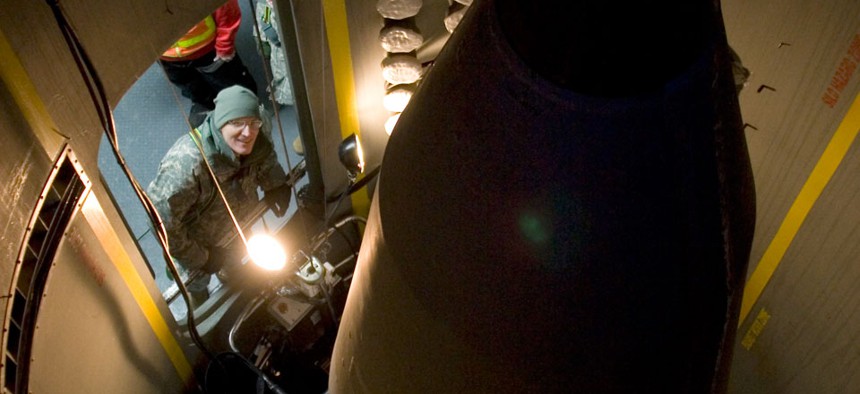Progress Hard to Gauge on Homeland Antimissile Program
Auditors note dearth of data on improvements.
Congressional auditors are complaining that a dearth of data is making it difficult to judge progress in improving a key homeland antimissile system.
The Pentagon was ordered under a 2013 law to report to Congress on specific efforts it was taking to improve the performance of the Ground-Based Midcourse Defense system -- the country's principal shield against a limited intercontinental ballistic missile strike. Pentagon officials eventually delivered the assessment in February, seven months late.
But while the document lists past and planned actions aimed at technological enhancements in the program, it fails to adequately explain how those steps would work in bringing about improvements to the system's performance, the Government Accountability Office said in an assessment released last week.
This lack of important contextual information, auditors said, is problematic for congressional defense panels' ability to perform oversight of the GMD program, which finally scored a critical intercept win in a June test after years of failures.
"Without an understanding of the effectiveness of these actions and plans, Congress may not have the information it needs when making difficult choices on where to spend limited funds," the GAO report concludes.
For example, the Missile Defense Agency informed Congress that it had upgraded the software of all first- and second-generation kinetic kill vehicles deployed on interceptors under the GMD system. However, the agency "did not describe the effectiveness of these improvements or whether these improvements have been confirmed to work as intended in flight tests," reads the report.
Additionally, while the Missile Defense Agency discussed its plans to create a better system for estimating interceptors' reliability, the agency failed to disclose how the new methodology would actually be put in place, according to auditors.
Other gaps in information include the continued lack of a timeline for finalizing a new Ground Based Interceptor acquisition strategy. This comes in spite of the fact that the Pentagon would need such a strategy before it begins the process of purchasing 14 more interceptors for deployment in Alaska in fiscal 2018, the GAO report says.




